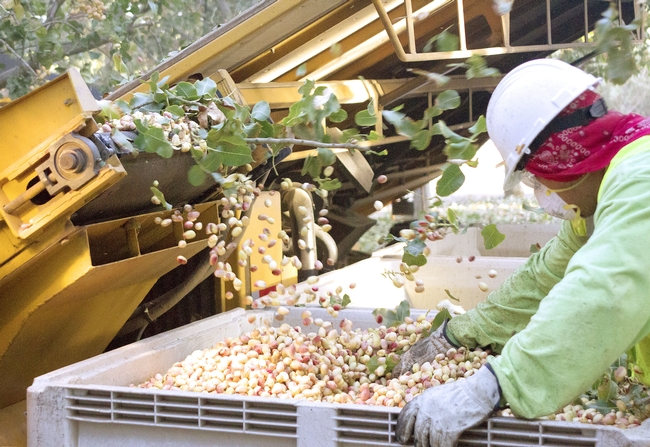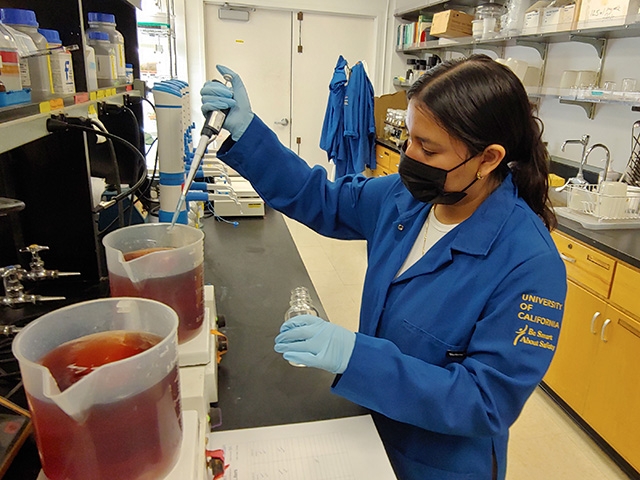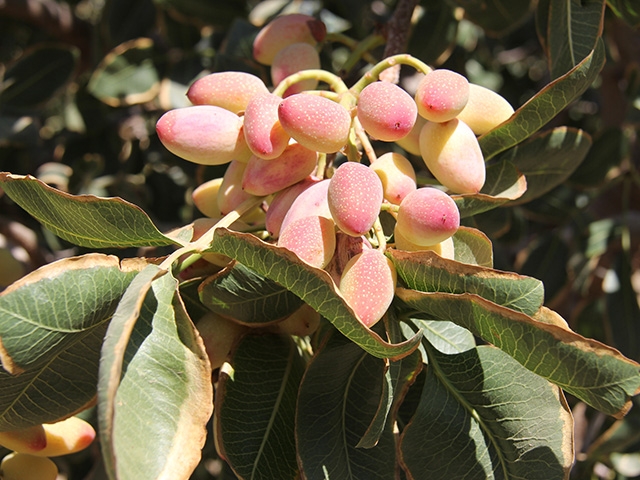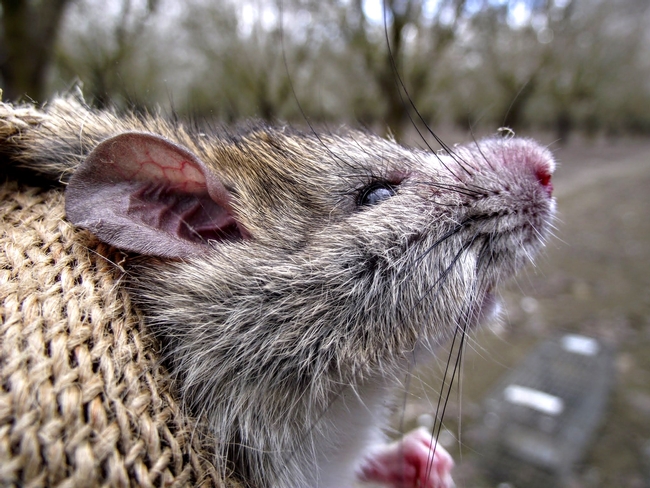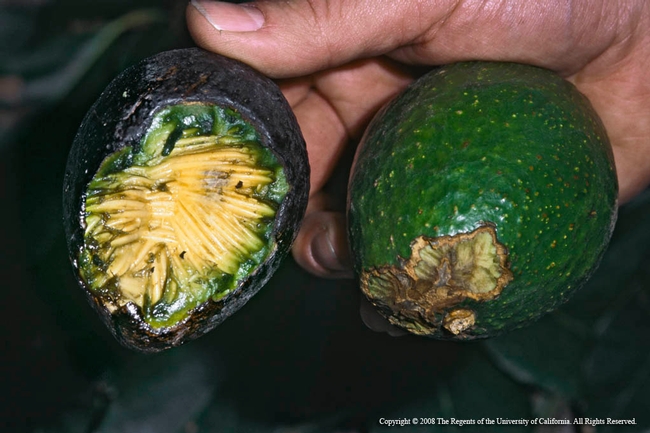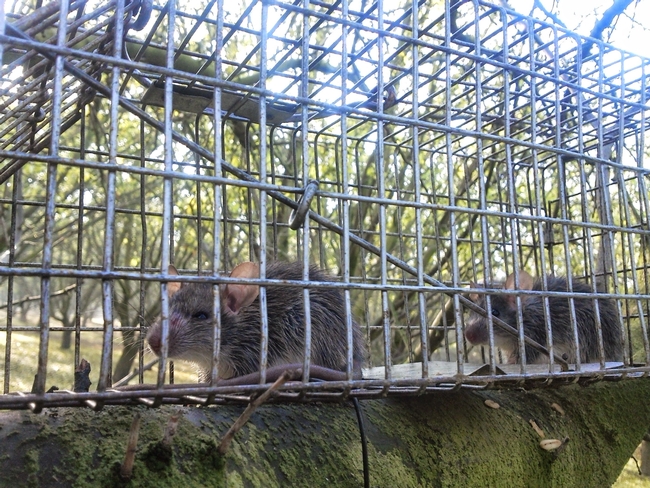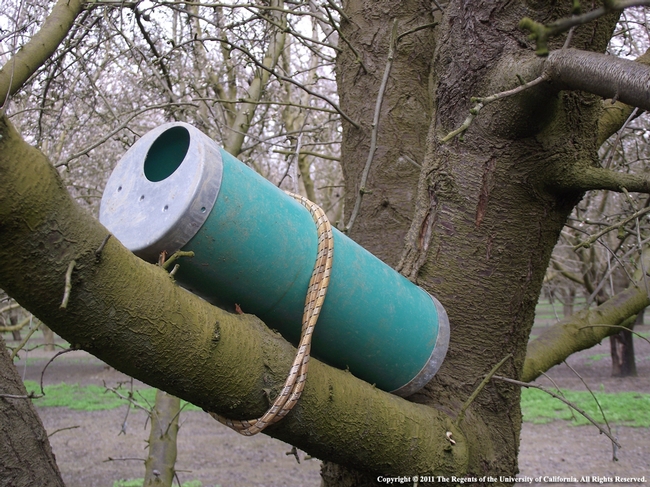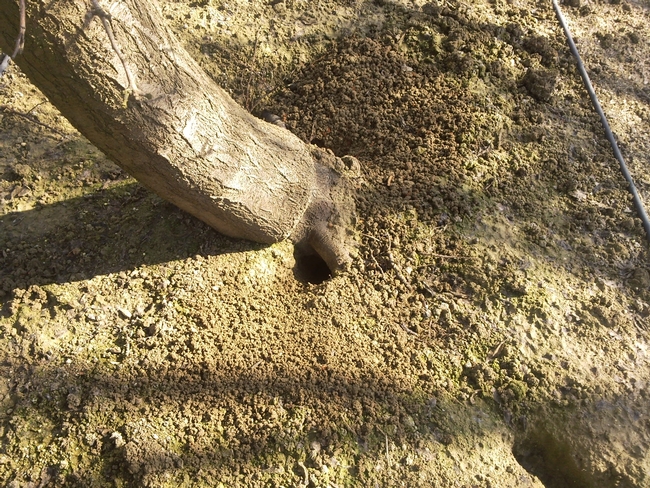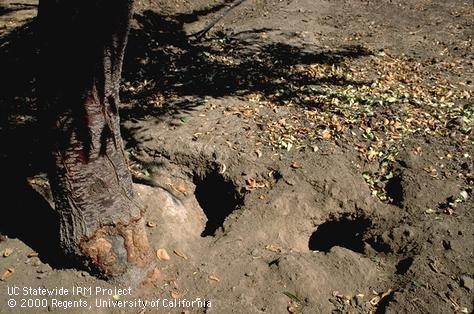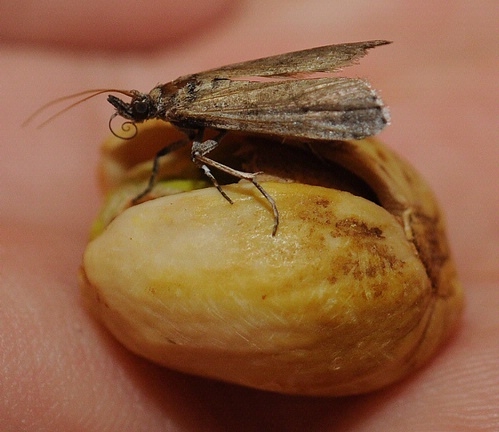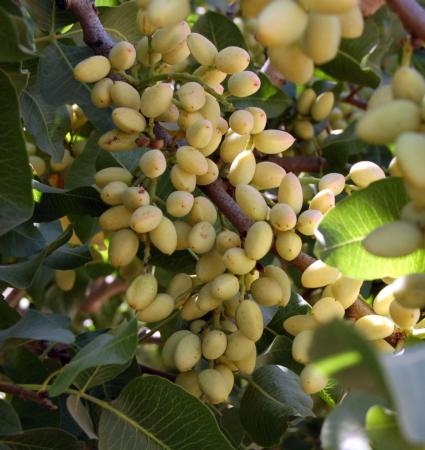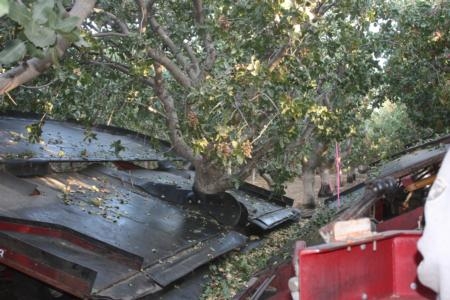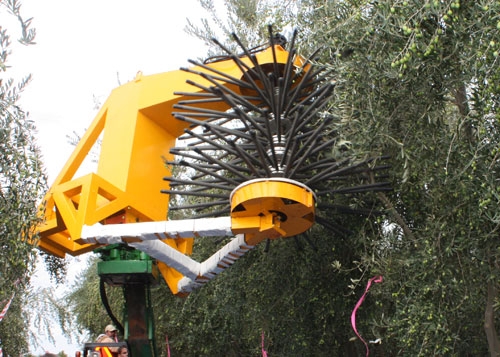Posts Tagged: pistachio
NIFA funds $3.8 million project to find climate-resilient pistachio trees
Growers invited to participate in study by sharing their experiences
A multi-state team led by Patrick J. Brown has been awarded nearly $3.8 million over the next four years for a project to improve pistachio production as the industry faces warmer winters and scarcer water.
“We are at this unique point in history where we can do this,” said Brown, an associate professor in the UC Davis Department of Plant Sciences.
The project aims to ensure the industry can thrive in coming decades despite the challenges faced. Growers are invited to participate in the study, sharing what they already are trying in their own fields or supporting any aspect of the project. To discuss the possibilities, contact Brown at pjbrown@ucdavis.edu or (530) 752-4288.
The project includes research to ensure pollination, experiments to calculate irrigation needs amid water shortages, creating tools to improve public breeding programs, developing more efficient harvesting equipment, and economic analyses to ensure future pistachio cultivation is economically rewarding. Researchers hope to offer a guide for growers deciding whether to plant new orchards or remove existing ones.
“The success of California's pistachio industry, which is the top producer of the nuts in the world, has always relied on a strong collaboration between UC researchers and pistachio growers,” said project participant Florent Trouillas, a UC Cooperative Extension specialist in the UC Davis Department of Plant Pathology. “Research efforts must continue to address enduring and new challenges, improve sustainability and ensure the profitability of pistachio farming.”
The tasty, green nuts have blossomed into a $5.2-billion industry in California, thanks to their greater tolerance of dry lands and salty soils. The project aims to further improve their climate resilience by finding a rootstock that can thrive despite growing water scarcity and declining water quality projected over the next half-century. With millions of genetically distinct pistachio trees growing in the state, "we already have out there what may be the industry's next great rootstock," Brown said. "It's probably in some grower's field already. We just have to find it."
Researchers seek to pair that new rootstock with high-yielding scions – the producing part of the tree grafted onto the rootstock – to develop new combinations that can thrive in the different conditions across the state.
Trouble with “boy meets girl”
Pistachios, like many other tree crops, have male and female trees, and they require hundreds of hours of wintertime temperatures below 45 degrees Fahrenheit for the trees to flower in the spring. Wind blows the pollen from male flowers to female flowers, creating nuts.
Complicating the timing: Boy flowers and girl flowers generally require different amounts of winter cold to bloom. After a sufficiently cold winter, boys and girls flower together. But if the winter is warm, most of them will flower at different times, reducing pollination.
That happened in the winter of 2014-15, which saw unusually warm winter temperatures. The following fall, farmers harvested only half their expected crop, losing more than $1 billion, Brown said. Climate change is expected to provoke progressively warmer winters in the future, on average.
An additional complication: The boy scions come from a single variety, or cultivar, and the girl scions come from another single cultivar. "In California part of the problem is that we have been relying on a single male and single female cultivar," Brown explained.
A key part of this project will be to test new scions that can pollinate efficiently despite warmer winters. “We now have additional male and female scions released in the last 10 to 15 years, but we need more information on their chill requirements,” Brown said.
Growing importance of pistachio sector
With nearly 520,000 acres planted in California in 2021, pistachios are the fastest-growing tree nut crop in the state. Growers have doubled their plantings over the past decade, due to pistachios' drought tolerance and higher gross returns compared to other nuts, experts report. California dominates the industry, growing 99 percent of the nation's crop and nearly 60 percent of the world's crop, employing people in 47,000 full-time-equivalent jobs and creating $5.2-billion of total economic impact in 2020, according to American Pistachio Growers.
Brown's team is part of a wider effort at UC Davis to support the sector's growth and adaptation to climate change. Other department members participating in the project include co-directors Louise Ferguson, a UC Cooperative Extension pomologist, and Richard W. Michelmore, a distinguished professor and director of the UC Davis Genome Center. Also participating are Giulia Marino, a UC Cooperative Extension specialist; and Grey Monroe, an assistant professor.
Other UC Davis participants include Trouillas and Brittney Goodrich, a UC Cooperative Extension specialist in the Department of Agricultural and Resource Economics. The project also includes researchers from UC Merced, New Mexico State University and Purdue University.
The four-year project was among nearly $70 million in Specialty Crop Research Initiative grants awarded this fall by the National Institute of Food and Agriculture. The Department of Plant Sciences landed three of the 25 grants.
Read the NIFA grant summary.
Roof rats unnerve farm workers, damage orchard crops
Monitor for rodent activity and use bait stations before the growing season to prevent problems, UC ANR scientists recommend.
Roof rats are running rampant in California orchards this year, according to UC Agriculture and Natural Resources scientists.
“In pistachio and other nut orchards, roof rats are burrowing and nesting in the ground where they're chewing on irrigation lines, causing extensive damage,” said Rachael Long, UC Cooperative Extension advisor. “They are also nesting in citrus trees, feeding on the fruit and terrifying field workers when they jump out as people are picking fruit. The chewing pests are also girdling citrus limbs, causing branch dieback.”
The wet winter of 2017 led to lots of weed seeds for rats to eat. “Last season, rats were also nibbling on pomegranates, avocados, and other fruit and nut crops, rendering them unmarketable,” Long said.
Holes in the ground around the base of pistachio trees throughout a Yolo County orchard puzzled the grower.
“We looked for ground squirrels, but never saw any,” Long said. “We set up game cameras, but only got birds and rabbits. We put rodent bait in the holes, but the digging didn't stop.”
Long, the pest detective, cracked the case by consulting Niamh Quinn, UC Cooperative Extension human-wildlife interactions advisor based in Irvine. “She informed us that the damage we were seeing was from roof rats.”
Burrowing roof rats sounds like an oxymoron. While roof rats generally don't burrow in urban environments, their country cousins have been known to burrow.
“It's not true that they don't burrow,” Quinn said. “When I worked as staff research associate for Roger Baldwin, UC Cooperative Extension wildlife specialist, that is mostly what we studied, burrowing roof rats in orchards.”
Control measures
Baldwin said, “It seems to be a good year for rats in a number of different areas and crops throughout the state. I've received more questions and comments about rats this year than perhaps the last 10 years combined. As for bait application, putting bait down burrow systems for rats doesn't usually work too well, so I'm not surprised that approach didn't work. Growers will likely have better luck with bait stations in the trees.”
Because the rats climb, Baldwin suggests attaching bait stations to tree branches.
“In addition, elevating the bait stations will eliminate access to bait for many protected mammal species, such as kangaroo rats,” Long said. “The bait diphacinone grain can be purchased from some ag commissioners' offices. This is what Roger Baldwin said they tested and it worked.”
As for the bait stations, they should be designed so that there isn't any spillage for nontarget animals to eat, Long said.
When roof rat outbreaks occur, rodenticides are often needed to prevent crop damage. However, timing is critical as diphacinone use is highly restrictive and not allowed during the growing season, which is beginning as the weather warms.
“Check the product label for application instructions,” Long reminds growers. “It's the law.”
Identifying the pest
One way for growers to identify whether they have roof rats is by the size of the burrows. The nocturnal pests are active above ground in trees and below ground.
“Roof rats can forage away from their nest, so you won't likely find signs of their activity, such as rat droppings outside their burrow, to help identify them,” Long said.
Ground squirrels are active during the day, so they are more likely to be seen, dig holes about 4 inches in diameter and forage above ground near their burrows. Vole and mouse holes are 1- to 2-inches in diameter. Roof rat holes are typically 3 to 4 inches in diameter and might have nut shells in front of them, for example pistachio or almond shells. Rabbits will feed on seedling crops, but do not dig burrows.
Roof rats are prolific breeders that reproduce year-round, according to Baldwin. Females typically have three to five litters per year with five to eight young, enabling their populations to rapidly increase. The omnivores feed on a wide variety of plant and animal materials, allowing them to adapt to any environment, including urban and agricultural lands.
“Rats are sneaky and hard to spot,” Long said. “If you see damage, including digging in the soil but no wildlife, suspect rats.”
For more information on controlling roof rats, download Quinn and Baldwin's free UC ANR publication 8513, Managing Roof Rats and Deer Mice in Nut and Fruit Orchards at http://anrcatalog.ucanr.edu/Details.aspx?itemNo=8513.
For more information about ground squirrels, download the free UC IPM Best Management Guidelines http://www.groundsquirrelbmp.com or UC IPM Pest Note http://ipm.ucanr.edu/PMG/PESTNOTES/pn7438.html.
Pistachio industry targets navel orangeworm with sterile moths
The pistachio industry is funding an effort to control navel orangeworm with sterile moths reared at a USDA facility in Phoenix, reported Annika Cline on KJZZ's The Show.
The same approach was used in a long-running battle with pink bollworms, which used to be the bane of cotton farmers. The story said USDA is checking fields this year before declaring pink bollworm officially eradicated.
Navel orangeworm isn't a serious pest of citrus, as the name might suggest, but it is devastating in tree nut production, said David Haviland, the UC Cooperative Extension entomology advisor in Kern County. Navel orangeworm moths lay eggs inside nuts, which mature and eat the nut meat. The cost of dealing with the pest is "huge," Haviland said.
Currently, the best strategy for keeping the pest in check is mummy removal - clearing nuts leftover after harvest.
"On every acre of almonds or pistachios in California, growers will spend two, three, sometimes $400 on an acre just doing what's called mummy removal," Haviland said.
Farmers also use pesticides against naval orangeworm. Haviland said they are expensive and require tedious paperwork.
"If the growers can use the sterile technique to actually avoid pesticide use altogether, that would be an ideal situation for both the farmer as well as for the consumer that's concerned about how their food is produced," Haviland said.
The USDA facility expects to send a shipment of sterile moths to California in August to see how well they disperse.
Pistachio harvest: Wait, split, GO!
“Pistachio is a funny kind of nut,” says UC pomologist Louise Ferguson. With other nuts, the shell grows and hardens as the kernel develops, whereas pistachio grows its shell first, hardens it, and then plumps up a kernel inside. As early perhaps as Labor Day, when growers are always hopeful the harvest can begin, it will be seen whether the nuts in the millions of trees in California orchards have formed well.
Tension is rising. In these last hot days of August, as the nuts reach maturity, the shells must split. If too many of them don’t, the harvest will be much less profitable, because it’s hard to make a natural-looking split in a pistachio shell with a machine, and unsplit pistachios bring a lower return. Growers are watching the split percentages carefully; wait too long for the highest number and navel orange worms have a larger window of opportunity to lay eggs along the sutures.
Pistachio orchards are harvested mechanically, and the machines are generally owned by contractors, though a large farm may have its own. As soon as the first machine enters the first orchard — the greatest acreage is on the west side of the San Joaquin Valley, around Bakersfield — a race begins.
“It’s chaotic,” says Ferguson. For more than 15 hours every day, beginning before dawn and finishing at dark, the harvesters speed through tunnels of dust and noise up and down orchard rows, followed by bank-out wagons that must get the nuts to the processing plant for drying before the day is out. Each wagon holds 55,000 pounds of pistachios. Left too long in the heat, under the weight of such a load, the pink hulls (each nutshell is within a hull) degrade and stain the shells a darker shade, which lowers the nuts’ value. The California pistachio industry prides itself on producing a large, naturally split, light shelled nut with no artificial splitting or bleaching.
The race gets more fraught each year because contractors have significantly more and more acreage to harvest within the six-week harvest season. Ferguson calls pistachio the “single most successful plant introduction in the 20th century.” The California crop has grown from zero to approaching a quarter million acres in 40 years.
Ferguson knows all about the harvesters, because they are no longer working well as the trees age. It’s her job to develop a harvester that does. The standard pistachio harvester is a trunk shaker: it has two units, one each side of the tree row, which travel together, lock onto a tree trunk, and shake it for 4 to 8 seconds so that nuts fall into the catch frame — resembling huge wing structures — that the units place beneath the tree canopy. The catch frame flicks the nuts into the conveyor belt at the base of the frame, which takes them to the back of the harvester, where they are conveyed through an air leg to remove debris out to the wagon while the harvester keeps moving from tree to tree.
Mature trees have thicker trunks that don’t shake as well, and the trees are now so large, “some nuts can go flying over the catch frame,” says Ferguson. She has trials under way with a direct-canopy-contact harvester. “It’s like a big hairbrush,” she says, that ruffles the tree canopy to get the nuts out of the tree.
Her colleagues at UC Davis are breeding varieties with a more reliable split and a very early or very late harvest date to spread out the season. Meanwhile, the chaos goes on. This year, because of the cool spring, Ferguson suspects the nuts will split over an extended time period, so growers may well decide to harvest once, then a few weeks later get the harvesters back for a second time.
See a tree shaker harvesting pistachio nuts below. (Video provided by Coe Orchard Equipment.)
Pistachio harvest

